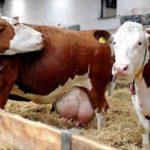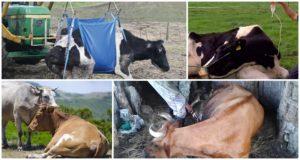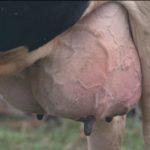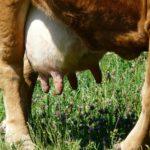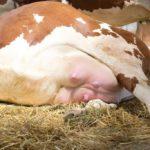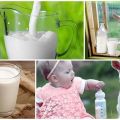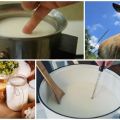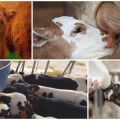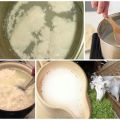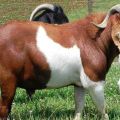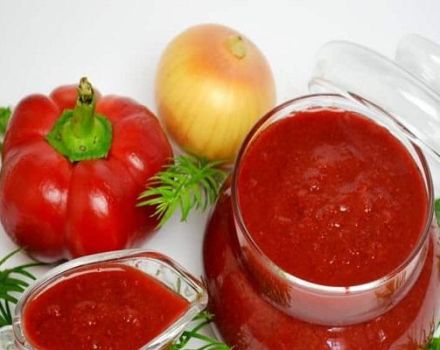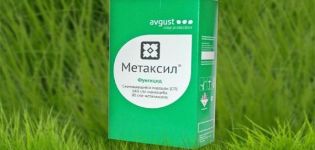Why a cow clamps milk and does not give everything, reasons and what to do
Cattle owners are sometimes faced with the problem of reducing milk yield. Lactation affects the feeding of offspring, and obtaining livestock products is important for the development of the economy. Therefore, farmers are concerned about the question of why the cow squeezes milk, and does not give everything. If you do not understand the reasons in time, milk yield may stop completely.
Poor conditions of detention
A cow's lactation period begins immediately after calving and ends one month before the next birth. Various circumstances affect productivity during this period. If the animal is healthy, the problem is often easy to fix. The conditions for keeping livestock are of great importance. A caring owner always makes sure that normal conditions for finding animals are created in the barn:
- lack of drafts;
- regular ventilation;
- maintaining optimal humidity and air temperature;
- timely cleaning of feces;
- replacement of old and dirty bedding.
Cleanliness in the pen for animals is maintained constantly, and disinfection is carried out every 2 months. Sometimes the amount of milk received is affected by loud noise, an abundance of blood-sucking insects or flies. Compliance with the rules of maintenance has a beneficial effect on lactation, reduces the negative effects of stress caused by the birth of a calf.
Improper nutrition
In order not to decrease milk yield, it is important to provide a complete, balanced diet and follow a number of rules:
- The diet of cows includes hay and straw, as well as compound feed, various root crops, vitamin and mineral supplements.
- They control the quality of the feed to exclude the ingestion of stale or rotten foods.
- Provide an abundant drink. Lack of fluid leads to a decrease in milk yield. Sometimes a little salt is added to the water.
- Observe the feeding regime. Animals get used to getting food at a certain time. Breaking the schedule causes the cows to hold milk.

Sometimes disruptions in milk yield are caused by a switch to another type of feed. It takes cows about 3 weeks to get used to a new product. This is due to the production of microorganisms necessary for food processing.
Incorrect milking
Inexperienced and rough milking will stress the animal and affect the amount of milk produced. Movements should be natural and light. The process is recommended to be divided into several stages:
- Before starting the procedure, the udder is washed with warm water.
- The milk flow is facilitated by the massage of the udder and teats for a minute.
- If milk is expressed by hand, they are pre-cleaned and treated with petroleum jelly. The ointment promotes the healing of wounds that occur during friction.
- After completing the process, it is advised to do the massage again.
- Squeeze out the remaining milk to prevent the risk of inflammation.
The procedure is followed by a schedule. Milk is taken 2 times a day, morning and evening. If one of the animals is sick, they begin to milk it last, so as not to infect the rest of the livestock.
A week after reproduction, the calf is weaned from the cow, but they do not stop expressing milk. The animal perceives this as feeding.
Old age of the animal
The amount of milk yield directly depends on the age of the animal. Cows reach sexual maturity at the age of 7 months. The first mating is best done later, when the formation of the body is completely over from a physiological point of view. Early pregnancy is not conducive to the production of large amounts of milk.
There are 3 groups of the lactation period:
| Lactation stages | Animal age |
| Puberty | From birth to 1.5 years. Lactation begins after the animal's first pregnancy |
| Maturity | 1.5 to 12-14 years old |
| Old age | Milk stops after 15 years |
The animals show maximum productivity between 5 and 9 calving. After this, there is a gradual decrease in milk yield. A balanced diet and proper care will prolong the lactation period. There are cases when a cow gave milk at the age of 15 years.

Diseases
A sharp drop in milk yield is often a sign of health problems. If the cow has a fever or udder swelling, the cow is shown to the veterinarian. It is necessary to take tests to establish the cause of the ailment.
Disease almost always causes a decrease in productivity and can lead to serious consequences.
Impaired milk flow reflex
Falling milk yield is often stressful. Unfavorable factors contribute to the release of epinephrine into the blood. The hormone acts on the brain and blocks the areas that are responsible for the production of milk.
The reasons for the violation of the milk flow reflex:
- Rough handling.
- The milking machine hurts the cow.
- Different people express milk.
- Noise and sounds unknown to the animal in the room.
- Weaning the calf.
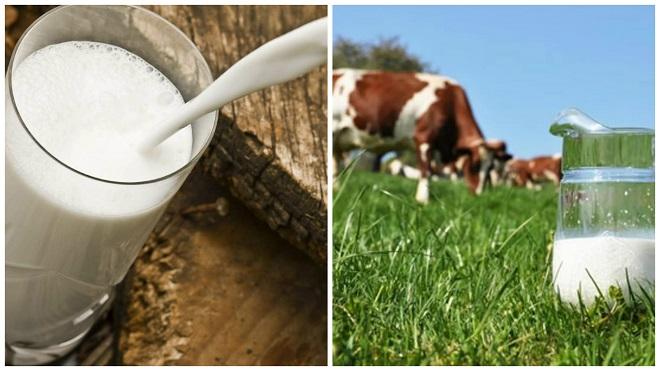
These reasons cause a decrease in productivity at any stage of lactation. To fix the problem, it is necessary to make the cow's conditions more comfortable and eliminate the causes of stress.
Nipple or udder injury
Decreased milk yields can cause injuries to the udder or nipples. Hematomas are painful and cause the cow to hide the damaged organ.
Treatment and care of sick animals:
- The cow is placed in a separate stall.
- Reduce the rate of fluid intake and exclude succulent feed from the diet.
- An ointment is applied to the affected area.
- Lotions are applied to the site of the injury to relieve swelling. The first 2 days make cooling compresses, then warming.
- Treatment is complemented by massage of the udder, milk is expressed.
The measures taken in time will calm the animal. After recovery, milk yield will resume.
Mastitis
Cows' performance is affected by mastitis, which often occurs after giving birth. Udder and teat damage can also be caused by inept milking. In order to prevent the spread of infection, it is important to identify the signs of the disease in time.
To detect signs of mastitis, milk is periodically handed over for biological analysis.
Treatment is prescribed by a veterinarian. An integrated approach combines medication, physiotherapy, hygiene and dietary adjustments.The sick animal is isolated from the rest of the herd to eliminate the risk of infection of the entire herd.
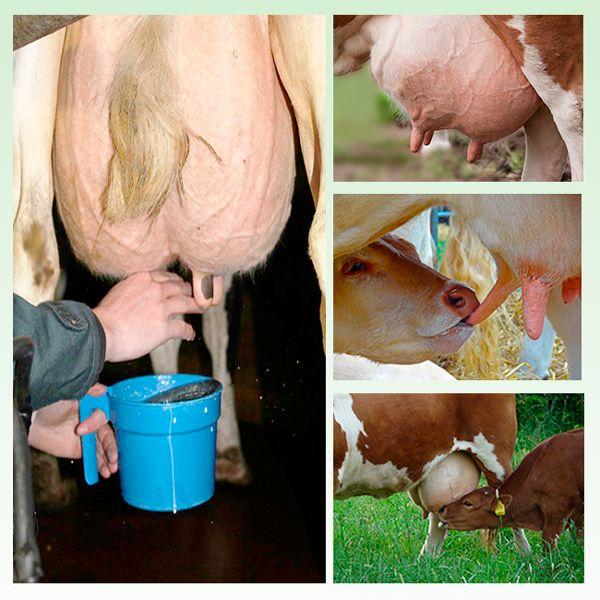
Ketosis
Another dangerous disease that affects milk loss is ketosis. This is a metabolic disorder, which is expressed in a malfunction of the carbohydrate, fat and protein balance. The presence of blood in milk is a sign of pathology.
Laboratory tests will help to establish an accurate diagnosis. In addition to using medications, it is important to follow dietary guidelines. Timely prevention will keep the animal healthy and the farmer will avoid financial losses.
There are many factors that affect productivity. Cows are sensitive and vulnerable animals. In addition to feeding and ensuring normal living conditions, the attitude of the owners also affects the health of the livestock. Mindfulness and nurturing are the best ways to increase milk yield.

